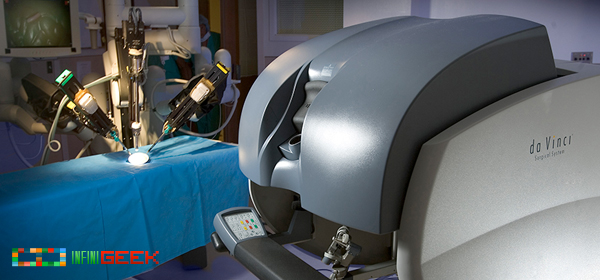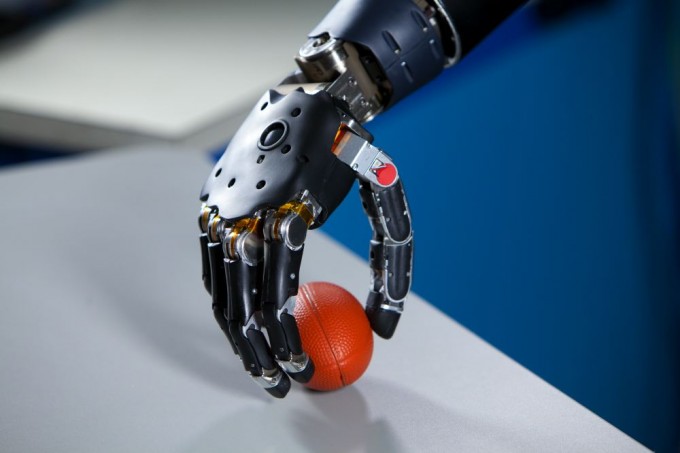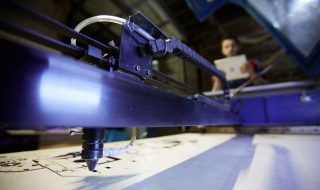For several decades the world of healthcare and technology has been irreversibly linked. It’s possible these days to think about one without considering the other. As technology continues to advance, so too does healthcare, providing new options for patients who need treatment for different diseases, conditions, and illnesses. It’s worth exploring how technology is going to continue to change healthcare over the next few years.
Blockchain
If you are familiar with blockchain technology, it’s likely because you have some interest in the world of cryptocurrency. You’re certainly not alone here. Indeed, there is a lot of debate and interest surrounding whether blockchain will mark the future of the financial industry. But other experts are more interested in how blockchain can be used outside the financial sector. To understand the potential here, we need a brief understanding of the blockchain system.
Blockchain is a solution that can be used to decentralize a previously centralized system. This includes the financial world which ultimately means that processes become more efficient as well as more secure. You don’t have to worry about data falling into the wrong hands. A lot of the excitement surrounding crypto is the fact that transactions could be impacted by fraud in this type of system which is important.
So, why would this benefit the healthcare industry? Well, we have already discussed a couple of the benefits. The first is the matter of security. You might think that healthcare companies are not exposed to the same security threats as other companies but this isn’t the case. Instead, it’s quite common for healthcare businesses to face security issues. Ransomware alone is enough to cost hospitals billions each year and should be considered a significant threat. The other big benefit to keep in mind is efficiency. With the blockchain, processes in this type of system can become, almost immediately, far more efficient.
Robotics

Next, take a look at robotics. Robotics has been a part of the healthcare industry for quite some time. With robotics, it’s possible to ensure that processes can be completed in healthcare without the risk of human error. It’s impossible to know exactly how many fatalities are caused by human error in the medical industry. But smart math does suggest the number is likely quite a lot larger than most people would feel comfortable with. Robotics means that processes can be completed without human interaction and this includes surgeries. This also ensures that surgical procedures can be far less invasive, providing the same benefits and less scarring.
Virtual Solutions
Next, let’s look at virtual solutions. The largest drive for this type of setup in the healthcare industry has all but certainly been the COVID-19 pandemic. During the pandemic, it became impossible to provide medical treatment in the traditional form. Instead, many healthcare companies went virtual so that they could maintain access to their clients. This included using options like Zoom calls for diagnostic support and that was just the beginning.
One might assume that now the situation surrounding COVID-19 is starting to improve, health companies are going to be less reliant on virtual options. However, this is not the case. Instead, experts predict that the virtual solutions being used by hospitals now are here to stay for the foreseeable future. They provide far too many benefits and take the pressure of an already strained medical network.
Big Data And Machine Learning
Have you heard of big data? Big data is the concept or the simple observation that businesses are now holding massive amounts of data on clients, customers and yes, patients. This is partly what made the cloud so vital and so important to the world today. The cloud was necessary to store the countless terabytes of data that companies are now holding onto.
Of course, it’s not just about holding onto the data. It’s about ensuring that it can be used the right way. In the right hands, it’s possible to use big data to predict future trends and even problems that lie on the horizon. Believe it or not, one of the reasons why the world has been able to tackle COVID-19 so effectively is because we weren’t completely unprepared for this possibility. Thanks to big data, scenarios like this have been mapped out for years.
Of course, data has also been used to provide a more personalized approach for patients and deliver a higher standard of care to them.
Virtual Reality
It’s easy to misrepresent virtual reality systems as a gimmick that has no practical use outside the world of entertainment. But this isn’t the case and researchers are incredibly curious about how this could be used the right way in a medical setting. One of the ways that VR is being used right now is to train medical professionals like surgeons. Using VR it’s possible to put surgeons in situations that feel incredibly real and offer simulations that are as close to real working experience as possible.
VR has also been studied as a way to help those who are suffering with chronic pain. Some research has provided evidence that VR can be an effective form of pain management and help patients get more control of conditions that are impacting their quality of life.
Artificial Intelligence

Arguably the most important aspect of AI for the healthcare industry is machine learning. Machine learning refers to a concept where programs can create problems to complete processes that are beyond the grasp of humans. A key example where this could be utilized in the future is with diagnosing health issues.
Right now, there is a massive concern surrounding the rise in antibiotic resistant superbugs. Solutions such as Thermo Fisher procalcitonin are being used to combat this issue. But the next step or a potential future step would be to use machine learning. Through machine learning it would be possible to change the game completely, diagnosing any medical condition in seconds. As well as this, cures could be theoretically created at the same time. While we’re not there yet, this future isn’t as far off as most believe.
Augmented Reality
Of course, it’s not just VR tech that is changing the game in terms of reinventing how people see and interact with the world using technology. Another example of this would be augmented reality systems and these too have a part to play in changing the world of healthcare. Augmented reality is tech that integrates virtual constructs into the real world. This can be accomplished using a camera display or something more immersive such as wearable. In healthcare, it’s another way to ensure that medical students are better prepared for experiences that they are going to encounter in their career.
It could also be used in professional settings, allowing doctors to quickly siphon through complex information when interacting with patients. The trick would be to ensure that these devices are secure and avoid data being left vulnerable. This type of solution isn’t on the market yet but it’s another option that is likely just over the horizon.
Wearables
We have already discussed how new technology can help ensure that patients can access a more virtual solution and wearables are perhaps the best example of how this could be achieved.
The right wearables can provide a massive different range of information in the medical setting these days. For instance, you can use wearables to ensure that information such as blood pressure and sugar levels can be monitored. Critically, the latest wearables will mean that you can monitor this information from afar. That is going to stop the need for unnecessary trips to the doctors, hospitals and appointments. This is another way that tech can be used to take pressure off a system that is under severe levels of strain. Levels of strain can also be reduced in members of the families of elderly people thanks to medical wearables. With existing and continuously developing tech like this seniors personal medical alarm, elderly people can go about their day independently whilst having a backup to call for emergency help or other support should they end up in a difficult situation or fall and hurt themselves. It’s also great for ensuring that patients can be safely monitored, even during a time when social distancing is still recommended and could be for months or even years.
Nanotechnology
Finally, nanotechnology has been appearing in action-adventure films, video games, and science fiction for years. You might think that it’s just a fictional concept that has no grounds in reality. But that’s not the case and we are getting to the point where nanotechnology could be a real possibility for the future of healthcare. Nanotechnology is based on a concept where injectables could include microscopic tech that could be used to seal wounds and treat issues within the body. Research into the type of tech is ongoing right now.
One of the most recent examples of this tech is a pill that can be swallowed. A smartphone can then be used to control the pill so that it can release drugs for a patient on demand. The potential for tech like this is astounding.
We hope this helps you understand some of the key ways that technology could continue to cause a shift in the healthcare sector, changing how we think about technology and how it is going to allow us to reach a higher quality of life, even as life expectancy continues to rise.





